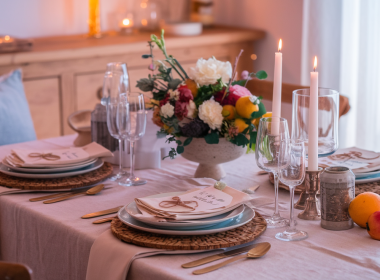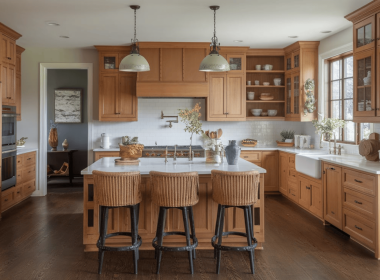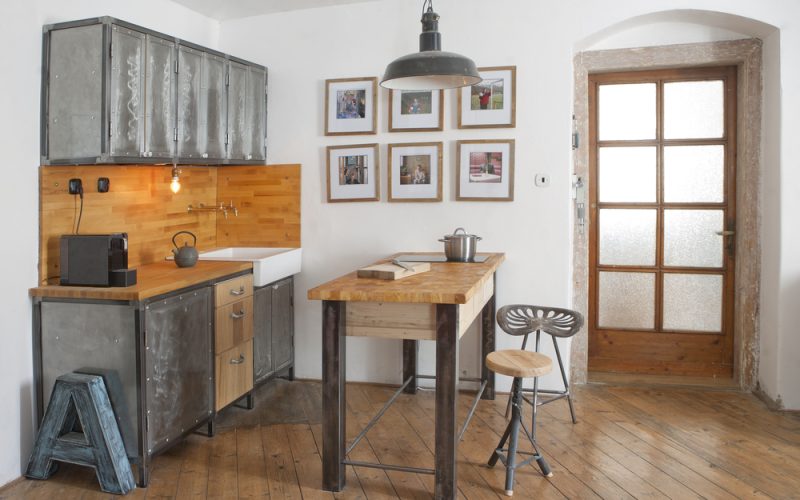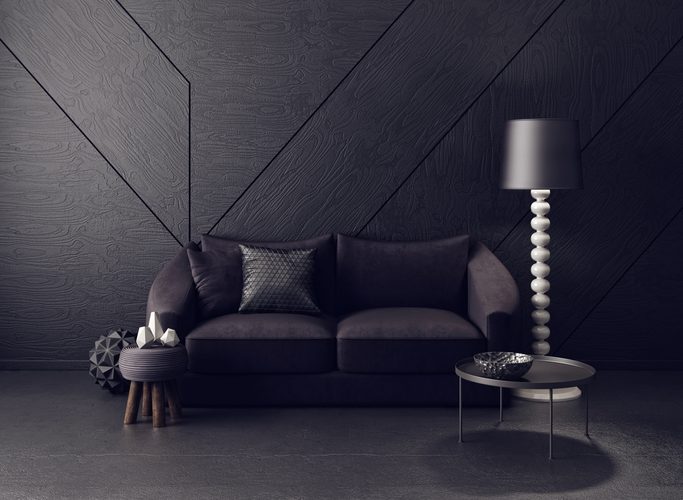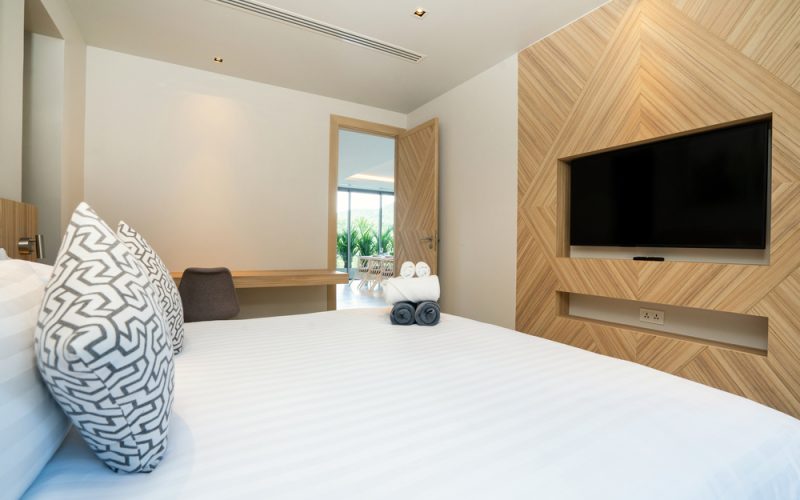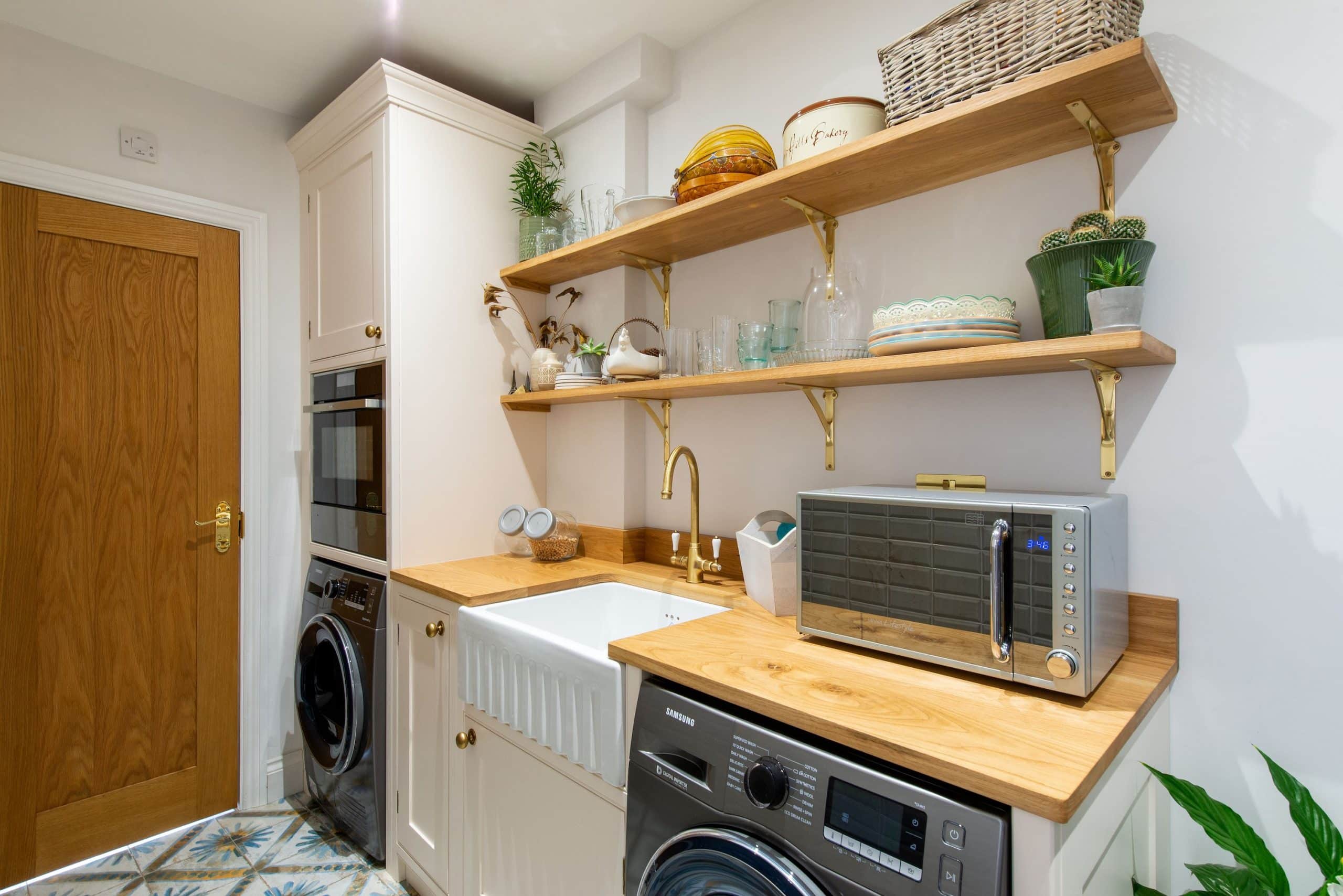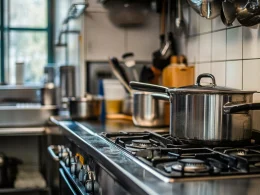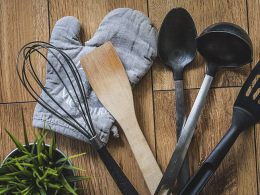Industrial kitchen design has captivated homeowners and interior design enthusiasts alike, blending raw aesthetics with functionality. Inspired by old factories and warehouses, this style brings a rugged, utilitarian charm to the kitchen space, balancing exposed materials with modern comforts. In this guide, we explore the defining features, color schemes, materials, stylistic elements, and key advantages of incorporating an industrial look into your kitchen.
Defining Features of Industrial Kitchen Design
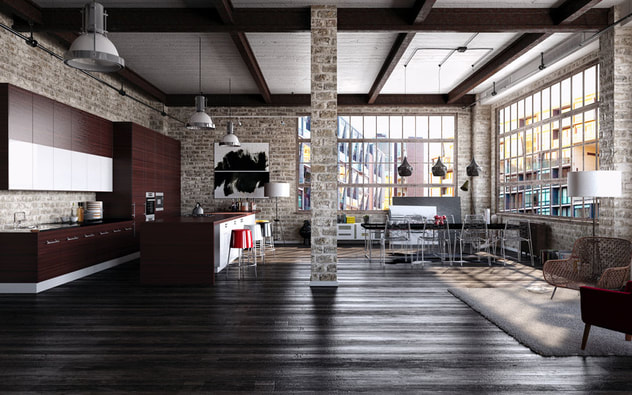
The industrial kitchen is defined by its unapologetically bold style, combining visible structural elements with a sleek and streamlined aesthetic.
One of the most defining features of an industrial kitchen is exposed pipes and ducts. Rather than concealing these elements, the industrial style embraces them as part of the kitchen’s character, celebrating the raw mechanics of the space. This approach, often seen with beams and ductwork, lends a truly authentic, industrial feel.
Another hallmark of industrial kitchens is open shelving, which combines functionality with a minimalist look. Open shelves not only offer easy access to kitchen essentials but also provide an opportunity to showcase cookware, dishes, or even decorative accents like plants and vintage kitchen tools.
Metal accents are a prominent feature as well, often showcased in materials like stainless steel, matte black, and tarnished brass. These metallic details, from cabinet handles to lighting fixtures, create a visually cohesive look and enhance the utilitarian appeal of the kitchen.
Textured walls, such as exposed brick or concrete, are also integral to the industrial kitchen. These textures add depth and visual contrast, creating an unfinished look that juxtaposes beautifully with the smoother surfaces found in countertops or cabinetry. Together, these features form a kitchen that is both stylish and highly functional, celebrating the beauty of unrefined materials while embracing a modern sensibility.
Neutral Color Palette with Warm Undertones
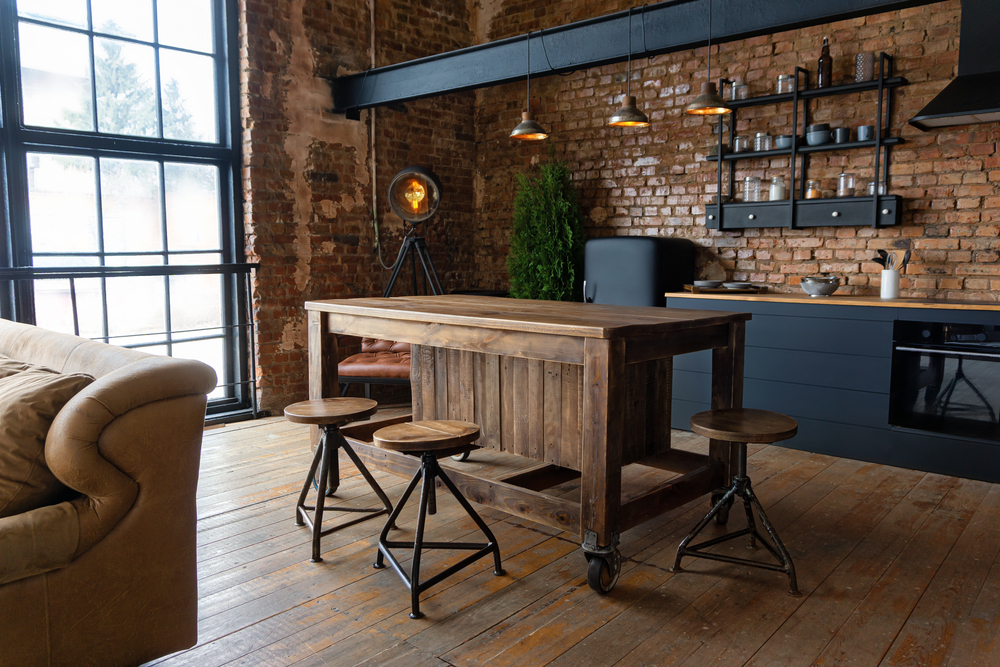
Industrial kitchens typically feature a neutral, muted color palette that complements the natural materials and textures central to the style. Black and gray tones form the base of this color scheme, often seen in matte finishes or soft charcoal shades that create a modern, understated atmosphere. These shades pair effortlessly with metal fixtures and accents, adding an elegant contrast to the raw materials used throughout the space.
To add warmth, brown and earth tones are introduced through wood elements. Reclaimed or natural woods in various shades bring an organic quality to the kitchen, softening the overall look. Hints of copper and brass, often seen in light fixtures or hardware, further enhance the color palette by adding a touch of warmth and sophistication. This balanced combination of colors allows homeowners to introduce subtle accents through decor or artwork, enriching the space without overwhelming the cohesive industrial aesthetic.
Essential Materials in Industrial Kitchen Design
Materials are at the core of industrial kitchen design, and combining different textures is essential for creating the layered, balanced look that defines this style. Wood is one of the primary materials used, often in reclaimed or unfinished forms that highlight natural grain and imperfections. Used in cabinetry, shelving, or even countertops, wood adds a warm, organic contrast to the hard edges of metal and concrete.
Metal is another key material, commonly seen in stainless steel appliances, cabinet hardware, and even countertops. This material adds a professional, almost utilitarian feel to the kitchen, enhancing its industrial look. Darker metals like blackened steel or wrought iron are frequently incorporated into lighting fixtures and furniture, contributing to the space’s overall character.
The industrial look also makes features of functional aspects of materials and construction. Whether it’s unpainted galvanised steel, exposed pipework, bare threaded rod or visible hinges and latches, this approach provides interest, character and a no-nonsense, minimalist look to a kitchen.
Concrete, whether polished or raw, makes a bold statement in industrial kitchens, especially when used for countertops or flooring. Its durability and resistance to wear make it an ideal choice for high-traffic areas like the kitchen. Lastly, exposed brick walls bring an unmistakable, historic charm to the space, introducing yet another layer of texture that enhances the industrial aesthetic. Each of these materials contributes to both the visual appeal and practical durability of the industrial kitchen.
Style Choices to Personalize the Industrial Look
While industrial kitchens have a distinctive aesthetic, certain style choices can elevate the design, adding a personal touch that makes the space feel unique.
Minimalistic cabinets are a popular choice, often handle-free or featuring simple metal pulls. Flat-panel designs and shaker-style cabinets are frequently used, emphasizing clean lines and a clutter-free look that complements the streamlined industrial style.
Statement lighting is also an essential aspect of industrial kitchens, with pendant lights, metal shades, or vintage Edison bulbs creating focal points above kitchen islands or dining areas. These lighting elements, chosen to match the metal fixtures or accents, add character and serve as functional yet stylish pieces.
The balance of open and closed storage is another stylistic choice that adds a practical edge to the design. While open shelving showcases essentials and decor, closed cabinets keep clutter hidden, enhancing the kitchen’s organized and visually appealing layout. These choices enable homeowners to customize their industrial kitchen, whether they prefer a rustic or modernized interpretation of the style.
Conclusion
Industrial kitchen design is more than just a trend—it’s a way of creating a kitchen that is both functional and visually captivating. By embracing raw materials, neutral colors, and streamlined design elements, an industrial kitchen marries the charm of the past with the demands of modern life.
Whether you’re planning a full kitchen renovation or adding a few industrial-inspired elements, this style offers a timeless blend of durability and aesthetics that will enhance your kitchen’s appeal for years to come.

